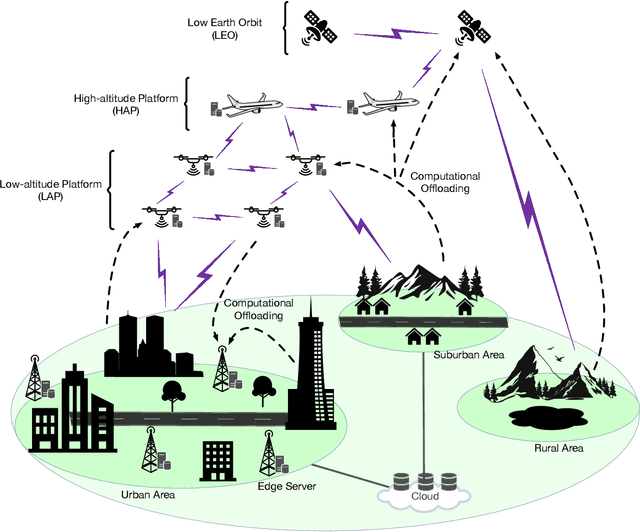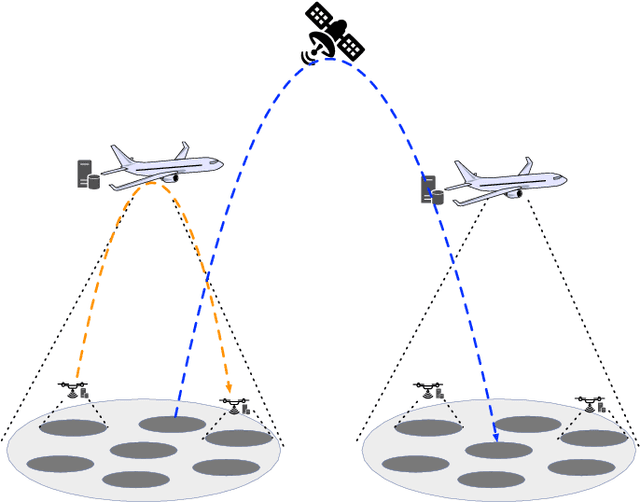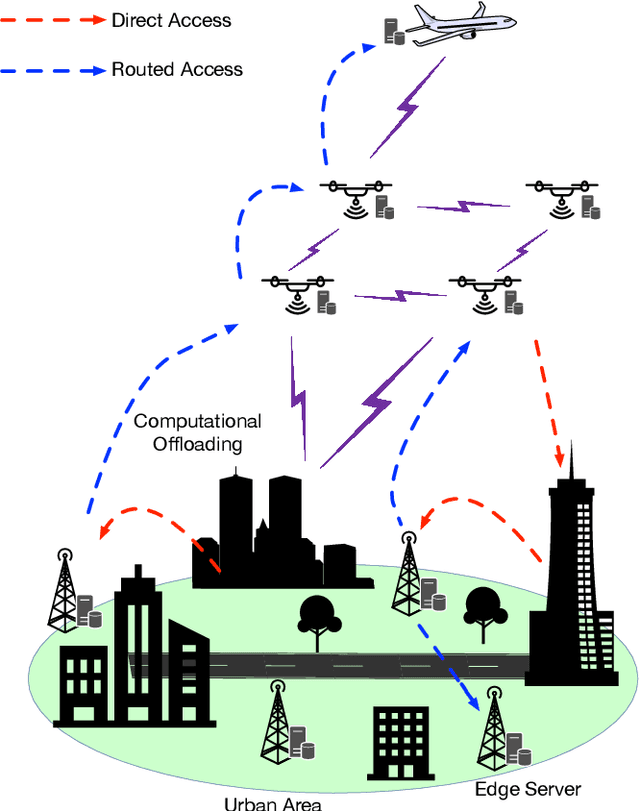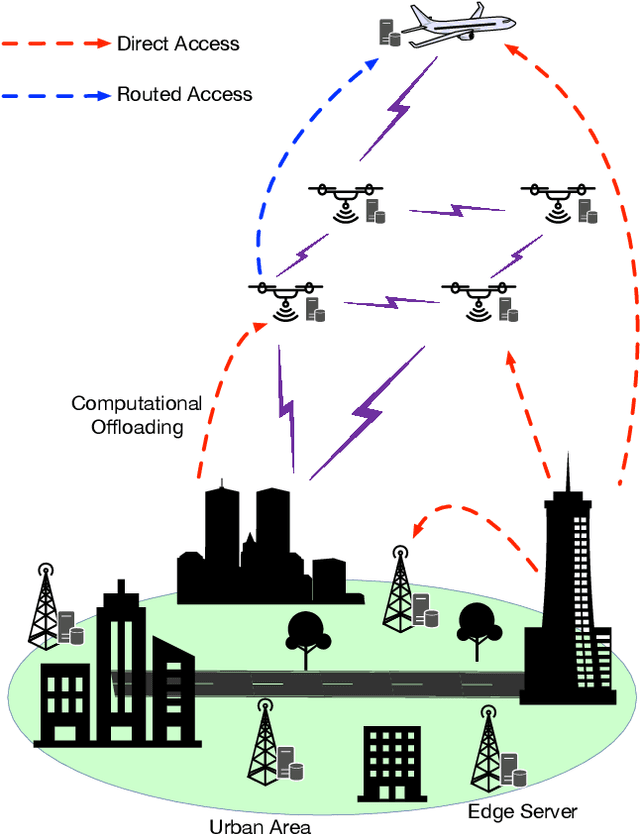Air Computing: A Survey on a New Generation Computation Paradigm in 6G Wireless Networks
Paper and Code
Sep 10, 2022



There is an ever-growing race between what novel applications demand from the infrastructure and what the continuous technological breakthroughs bring in. Especially after the proliferation of smart devices and diverse IoT requirements, we observe the dominance of cutting-edge applications with ever-increased user expectations in terms of mobility, pervasiveness, and real-time response. Over the years, to meet the requirements of those applications, cloud computing provides the necessary capacity for computation, while edge computing ensures low latency. However, these two essential solutions would be insufficient for the next-generation applications since computational and communicational bottlenecks are inevitable due to the highly dynamic load. Therefore, a 3D networking structure using different air layers including Low Altitude Platforms, High Altitude Platforms, and Low Earth Orbits in a harmonized manner for both urban and rural areas should be applied to satisfy the requirements of the dynamic environment. In this perspective, we put forward a novel, next-generation paradigm called Air Computing that presents a dynamic, responsive, and high-resolution computation and communication environment for all spectrum of applications using the 6G Wireless Networks as the fundamental communication system. In this survey, we define the components of air computing, investigate its architecture in detail, and discuss its essential use cases and the advantages it brings for next-generation application scenarios. We provide a detailed and technical overview of the benefits and challenges of air computing as a novel paradigm and spot the important future research directions.
 Add to Chrome
Add to Chrome Add to Firefox
Add to Firefox Add to Edge
Add to Edge